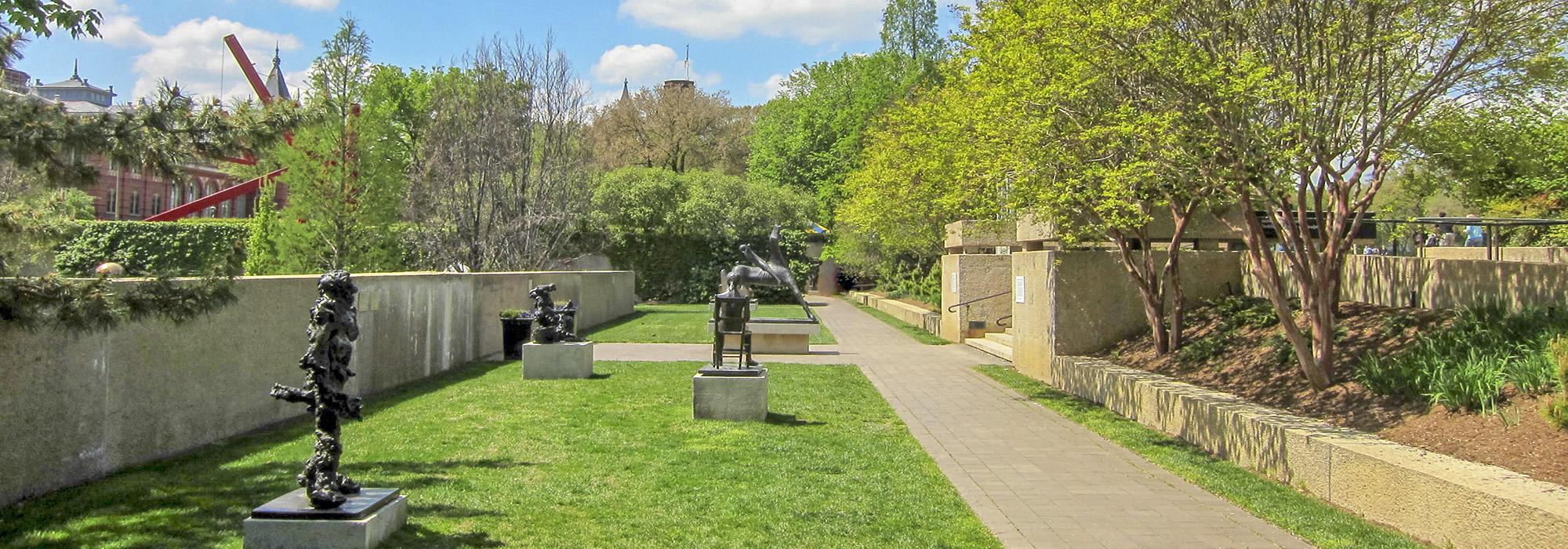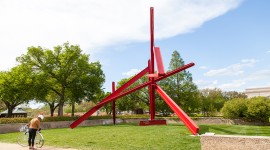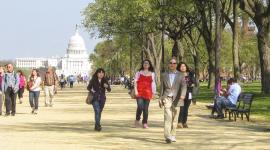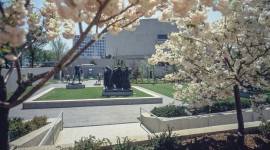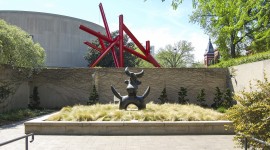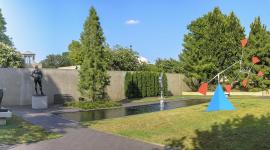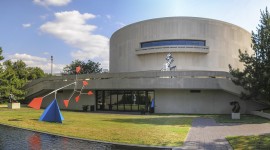Planning Officials on the Hirshhorn Sculpture Garden Redesign – Not so Fast
The proposed revitalization of the Hirshhorn Museum’s Sculpture Garden hit a major speed bump at a National Capital Planning Commission (NCPC) hearing on December 3. Commissioners repeatedly expressed skepticism about core elements of the redesign proposed by the artist Hiroshi Sugimoto, with one warning the end result could make the Sculpture Garden look like an “Olive Garden.”
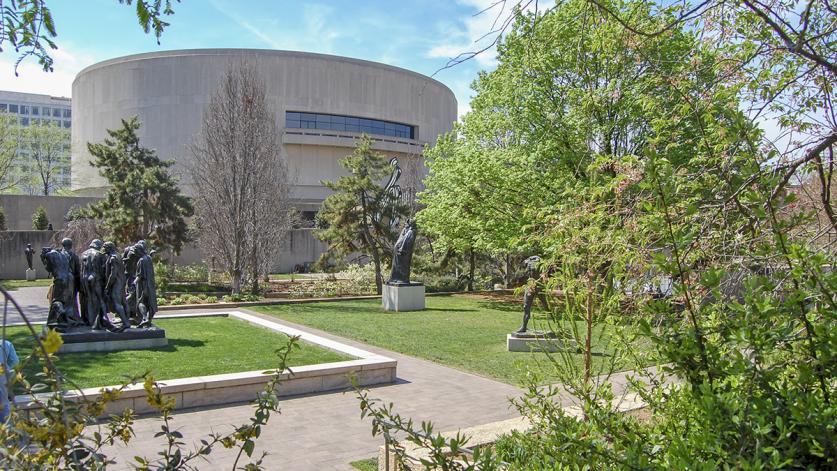
Some 72 people attended the two-hour and ten-minute online meeting which featured presentations by Smithsonian officials and public testimony from “official consulting parties” to the parallel Section 106 review process including The Cultural Landscape Foundation (TCLF), Docomomo U.S., D.C. Preservation League (DCPL), the Committee of 100, and others, and several Hirshhorn Board members. There was unanimity on the need for revitalizing the Sculpture Garden especially to address failing infrastructure. In addition, TCLF joined with others in lauding the Hirshhorn’s programmatic ambition.
However, the ongoing concerns since the Sugimoto plan was unveiled in April 2019 have centered on the introduction of stacked stone walls and alterations to the reflecting pool and its setting in the historic core. As TCLF has previously written, the Modernist museum building and sunken sculpture garden are unified through a common minimalist design vocabulary, shared materiality in the use of aggregate concrete, and visual and spatial continuity through the relationship of the rectangular reflecting pool with the rectangular window on the museum building (see below). The stacked stone walls and alterations to the pool are discordant and disruptive design elements that sever the intentional relationship between the building architecture and the landscape architecture. The Hirshhorn has been intransigent on the walls and has tinkered with the pool design.
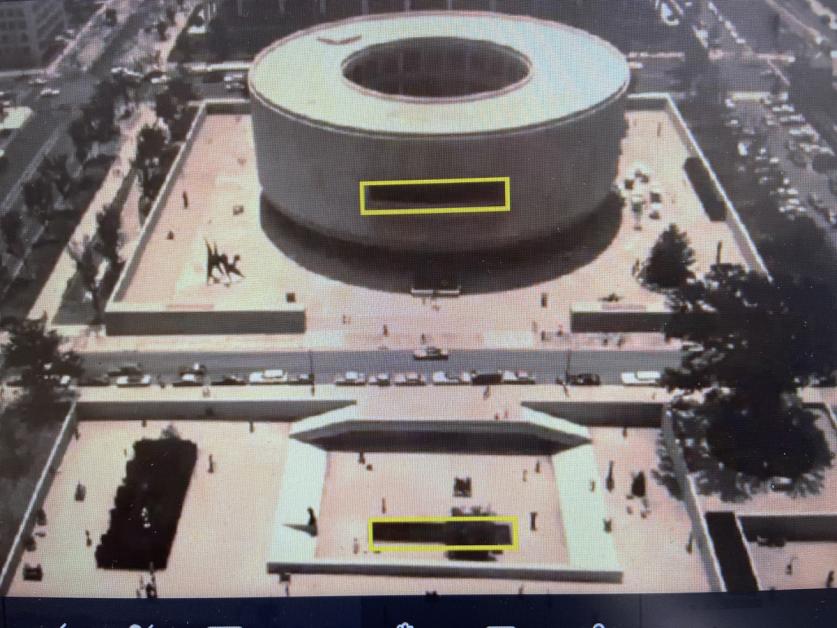
Hirshhorn and Smithsonian officials had to know they had an uphill climb. They’ve been selling the redesign as necessary to accommodate large-scale sculpture, performance art and other forms of art. The NCPC Executive Director’s Recommendations about the project issued several days in advance of the hearing made clear the Hirshhorn’s campaign was thus far unconvincing. The NCPC report directed the Hirshhorn and Smithsonian to provide a “comprehensive rationale for the programming needs that require” alterations to the Sculpture Garden’s historic core specifically noting the insertion of stacked stone walls and changes to the pool and pool area.
Surprisingly, Hirshhorn director Melissa Chiu couldn’t or wouldn’t meaningfully deviate from previous presentations at NCPC and elsewhere and attempt to address NCPC’s concerns.
Commissioner Beth White summed up the debate this way: “What I’m listening to [is] … both an aesthetic debate as well as how important is it to respect the historic integrity.” That is, the artistic vision of Sugimoto and the historic integrity of the original 1974 design by architect Gordon Bunshaft with the subsequent 1981 overlay by landscape architect Lester Collins (as TCLF’s Charles Birnbaum testified: “Hirshhorn officials have said they don’t want to compromise the artist’s vision, the artist being Mr. Sugimoto. But what about the artistic vision of Bunshaft and Collins?”).
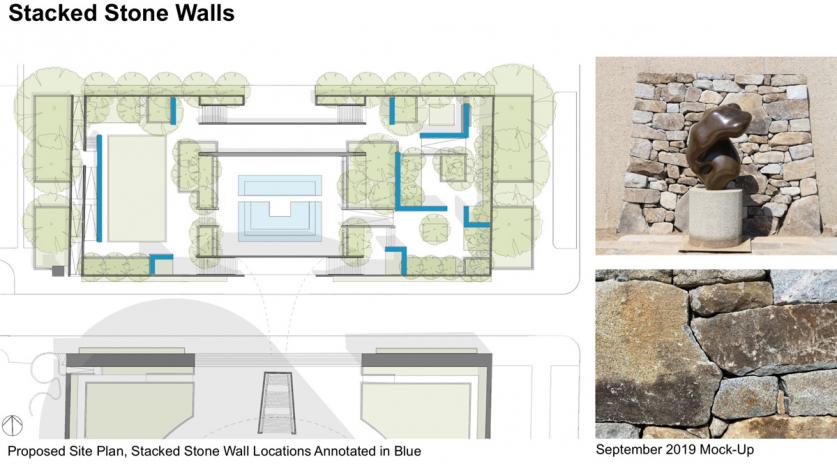
Docomomo U.S. executive director Elizabeth Waytkus, speaking on behalf of her U.S. and international colleagues, reflected the frustrations of many of the official consulting parities: “We are deeply concerned our feedback on the importance of avoiding negative impacts on historic character-defining features has been overlooked.” Ms. Waytkus added: “Based on nearly two years of project review and public participation in the Section 106 Process, we have not been presented with a sound and appropriate reason for the alteration” of the reflecting pool and the inner partition wall.
De Teel Patterson Tiller, testifying on behalf of the Committee of 100, was clear that the stacked stone walls “would radically contradict the overall historic material vocabulary of the Hirshhorn complex and is wholly inconsistent with the Sculpture Garden.” Mr. Tiller also said, “preserving the historic integrity of the pool is surely not beyond the talents of the current design team.”
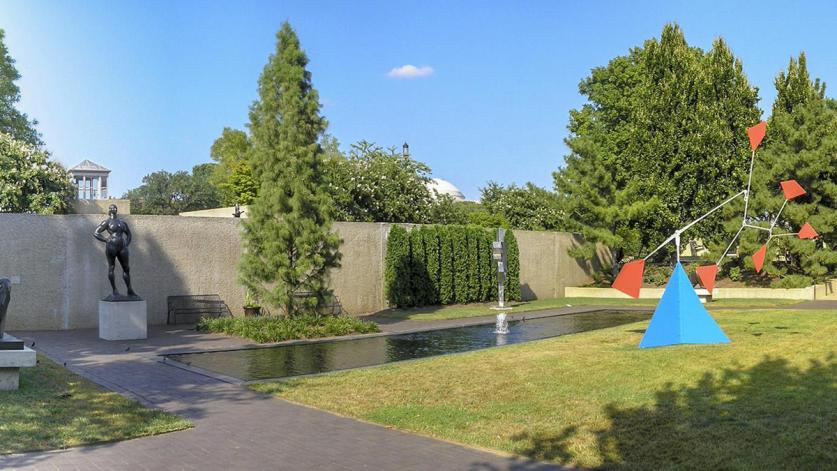
Lester Collins biographer Nancy Slade added: “The Sugimoto design severs that historic relationship by adding incompatible materials to the garden (stacked stone walls) and by absorbing the Bunshaft/Collins rectangular pool as part of a larger programable multi-elevational water feature, complete with its own geometries and materiality.”
D.C. Preservation League executive director Rebecca Miller testified that the Hirshhorn is “one of Washington’s and the country’s most celebrated modern masterpieces – a truly important work of art.”
Following the presentations and public testimony the forum was opened to NCPC Commissioners … and that’s when the situation got worse.
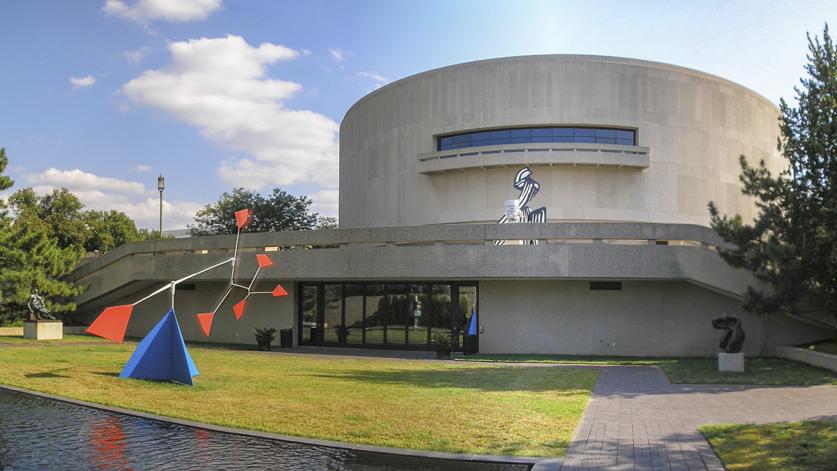
Those commissioners who spoke supported and reinforced the NCPC report findings. In fact, the commissioners ultimately voted unanimously (with one abstention) in support of the report. Commissioner Beth White said of the walls and pool: “those elements still need deeper work and deeper explanation.”
Commissioner Mina Wright, the Director, Office of Planning & Design Quality, Public Buildings Service at the Government Services Administration (GSA), was more colorful: “To be perfectly honest, stacked stone to me … if it’s the wrong kind … [it] just reeks of Olive Garden and that is not a good look on anybody.”
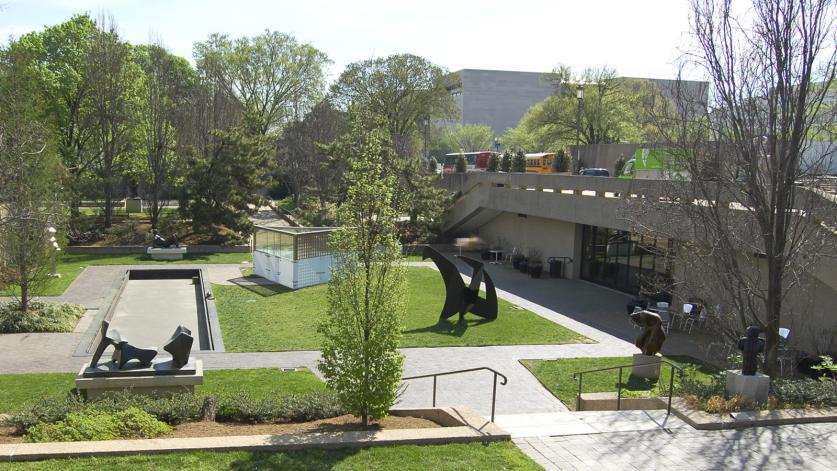
Commissioner Andrew Trueblood, the director of the D.C. Office of Planning, who attended on behalf of D.C. Mayor Muriel Bowser, noted that the presentation was “framed as the Smithsonian needs to come up with justification for why” they would “break the historic intention. I would suggest why not just not change the historic size of the pool.” He added: “I want to put that as an option for both … the pool dimensions … and the same thing with the materiality … I would encourage [the Hirshhorn and the Smithsonian] to just consider the original materiality of … the walls … it does create a great coherent connection with the Hirshhorn itself.” He concluded by saying he looked forward to seeing “the final plan hopefully with the original pool intact in size” and “the correct materials on the walls.”
At the outset of the meeting, Smithsonian officials stated that they intended to seek final NCPC approvals in Spring 2021. That now seems unlikely. There is unanimity around two key concerns – the introduction of stacked stone walls and alterations to the pool – and a growing chorus that acknowledges that this masterwork by Bunshaft and Collins is an important work of art.



